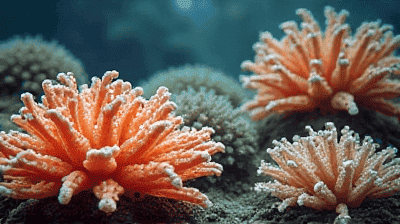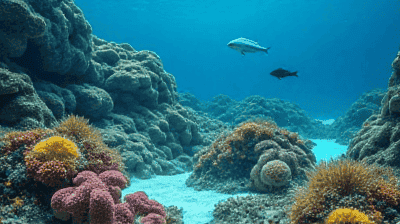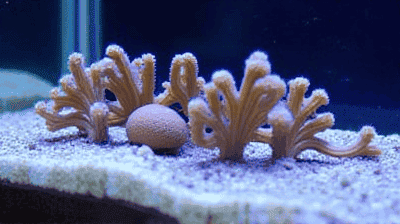
The world’s oceans, rich in biodiversity, face unprecedented threats due to climate change, pollution, and overfishing. One of the most alarming consequences of these threats is the rapid degradation of coral reefs, which serve as vital ecosystems for countless marine species and act as natural barriers protecting coastlines. As conventional conservation efforts struggle to keep pace with the deteriorating state of these marine habitats, an innovative approach is emerging that combines technology with environmental restoration: 3D printed coral reefs.
Coral reefs are diverse underwater ecosystems formed by the calcium carbonate skeletons of coral polyps, tiny marine animals that live in colonies. They are often referred to as the “rainforests of the sea” due to their incredible biodiversity. Coral reefs provide habitat and shelter for over 25 percent of all marine species, facilitating complex food webs and ecological interactions.
Biodiversity Hotspots: Coral reefs support countless species, including fish, invertebrates, and marine mammals. This high level of biodiversity contributes to the overall health of marine ecosystems.
Coastal Protection: Coral reefs act as natural barriers, absorbing wave energy and protecting shorelines from erosion and storm surges. This function is crucial for safeguarding coastal communities and habitats.
Economic Value: Coral reefs underpin various industries, including tourism, fisheries, and biotechnology. Healthy reefs attract tourists, provide food resources, and contribute to local economies.
Carbon Sequestration: Coral reefs play a role in carbon cycling, storing carbon in their calcium carbonate structures. This function contributes to mitigating climate change.
Despite their importance, coral reefs are under severe threat from several human activities and climate-related changes:
Climate Change: Rising ocean temperatures lead to coral bleaching, a phenomenon where corals expel the symbiotic algae living in their tissues, causing them to lose color and vital energy sources. Prolonged bleaching can result in mass coral die-offs.
Ocean Acidification: Increased carbon dioxide levels result in higher ocean acidity, which adversely affects coral growth and resilience. Acidic waters hinder the calcification process, making it difficult for corals to build their skeletons.
Pollution: Nutrient runoff from agricultural and urban areas leads to harmful algal blooms, which outcompete corals for resources. Plastics and other pollutants also degrade water quality and marine habitats.
Overfishing: Unsustainable fishing practices disrupt marine ecosystems and deplete key species that maintain coral health, such as herbivorous fish that graze on algae.
Coastal Development: Urbanization, tourism, and industrial activities along coastlines can lead to habitat destruction and increased sedimentation, which smothers coral reefs.

3D printing, or additive manufacturing, is a process that creates three-dimensional objects layer by layer using digital models. This technology has transformed various industries by allowing for rapid prototyping, customization, and production of complex structures.
The idea of 3D printing coral reefs is based on creating artificial structures that mimic natural reefs, providing a habitat for coral larvae and other marine organisms. The 3D printed structures serve as platforms for coral growth and can facilitate the natural recruitment of diverse marine species. Here’s how it works:
Designing the Structures: Researchers use computer-aided design (CAD) software to create models of coral structures that resemble natural reefs, incorporating features that maximize surface area for coral attachment.
Material Selection: The materials used for 3D printing must be environmentally friendly and suitable for underwater conditions. Biodegradable polymers, limestone-based materials, and other non-toxic substances are common choices.
Printing Process: Once the design and materials are finalized, the 3D printing process begins. The printed structures are created layer by layer, with careful attention to detail to ensure they will support coral growth.
Deployment: After printing, the structures are transported to the target locations and deployed on the ocean floor. Researchers often attach coral fragments or larvae to the structures to promote colonization.
3D printed coral reefs provide essential habitats for marine organisms. By creating stable surfaces for coral polyps to attach and grow, these structures can help restore damaged ecosystems and promote biodiversity.
Artificial reefs can assist in the natural recruitment process by providing a substrate for coral larvae. By enhancing the available habitat, 3D printed structures can accelerate coral growth rates and recovery efforts.
3D printed reefs can be designed to withstand the challenges posed by climate change, including temperature fluctuations and acidification. Researchers can optimize materials and designs to improve the resilience of coral populations.
Deploying 3D printed coral reefs creates opportunities for scientific research and monitoring. Scientists can study the effects of artificial structures on coral growth, biodiversity, and ecosystem dynamics. Advanced technologies such as underwater drones can be used for remote monitoring.
Projects utilizing 3D printed coral reefs can engage local communities and raise awareness about marine conservation. By involving citizens in restoration efforts, educational programs can foster a sense of stewardship and responsibility for ocean health.

One prominent example of using 3D printed coral reef technology is the REEF Project based in the Caribbean. The initiative aims to restore degraded reef areas by deploying 3D printed structures that mimic natural coral habitats. By involving local communities, the project promotes environmental education and sustainable practices.
The Coral Triangle Initiative focuses on the marine biodiversity hotspot in Southeast Asia. Researchers have explored 3D printed coral structures to restore local reefs damaged by climate change and human activities. The initiative seeks to enhance coral habitats and promote ecological resilience.
The ReefWorld Foundation has been at the forefront of 3D printed coral restoration in Australia. Collaborating with scientists and local communities, the foundation has created 3D printed artificial reefs designed to encourage coral growth while providing habitat for marine life.
Oceanic Global is another organization exploring innovative approaches to coral restoration through technology. Their efforts include deploying 3D printed coral reefs to enhance biodiversity and train communities in sustainable practices.
The Ecopearl Project in Thailand is utilizing 3D printing technology to create artificial reefs that engage local communities in conservation efforts. The initiative aims to restore coral populations while providing training in sustainable fishing practices.
While advancements have been made in selecting suitable materials for underwater 3D printing, challenges remain. Finding durable, non-toxic materials that can withstand marine conditions over time is critical for long-lasting structures.
Before deploying 3D printed reefs, it is essential to conduct thorough ecological assessments to understand their potential impacts on existing marine ecosystems. Unintended consequences could arise if the new structures disrupt local habitats.
Successful projects rely on community engagement and participation. Building trust and collaboration with local stakeholders can be challenging, especially in regions where fishing or tourism interests are at stake.
Many 3D printed coral restoration projects require significant funding and resources for research, material production, and deployment. Securing financial support and managing costs can be barriers to implementation.
The technology behind 3D printing coral reefs is still in its early stages. Continued research and development are needed to optimize designs, improve materials, and enhance the efficacy of restoration efforts.

As technology progresses, the development of new materials suitable for underwater 3D printing will play a pivotal role in the success of coral reef restoration projects. Biodegradable and bioengineering materials may offer solutions that align with ecological principles.
The integration of 3D printed coral reefs in marine protected areas can enhance conservation efforts by providing additional habitats for marine life. Policymakers and marine scientists can work together to create complementary strategies that leverage technology alongside traditional conservation methods.
The evolution of monitoring technologies, such as underwater drones and remote sensing, can provide valuable data on the success of 3D printed reefs. Real-time monitoring can inform adaptive management strategies to optimize restoration efforts.
International collaborations will be essential for scaling up successful 3D printing efforts. Partnerships among researchers, governments, NGOs, and local communities can drive knowledge sharing and establish best practices for coral reef restoration.
Engaging younger generations in marine conservation through projects involving 3D printed coral reefs can foster a sense of responsibility toward ocean health. Educational programs that incorporate hands-on activities can inspire future leaders in environmental stewardship.
3D printed coral reefs represent a promising intersection of technology and ecological restoration. As marine habitats continue to face unprecedented challenges, innovative approaches like this provide hope for restoring damaged ecosystems and preserving biodiversity. By harnessing the power of 3D printing, we can engage communities, promote awareness, and accelerate the recovery of coral reefs.
While challenges remain, continued research and collaboration among stakeholders can unlock the full potential of this technology. By investing in sustainable practices and integrating 3D printed structures into marine conservation efforts, we can work toward a healthier, more resilient ocean for generations to come.